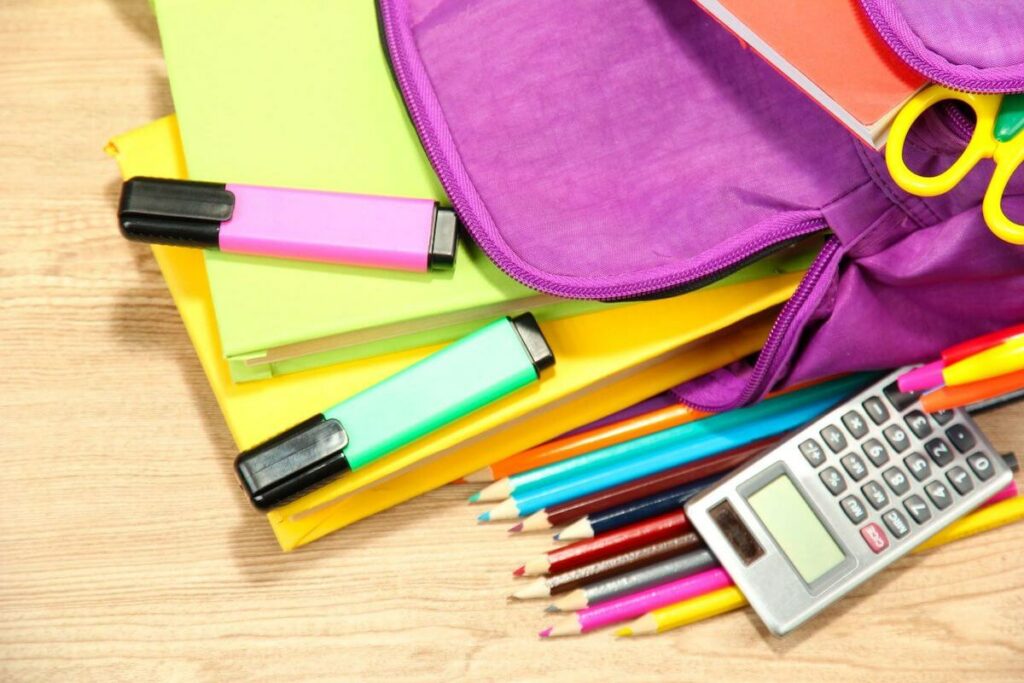Back to School…

…But an eye exam first!
As the days start getting shorter and the kids come home from camp, thoughts turn from the playground to the classroom. In addition to shopping for school supplies, and bugging their kids to complete their summer reading, parents should make sure that their child’s visual needs are attended to with an annual eye examination. Some parents are under the mistaken assumption that if their child is having trouble seeing they will tell their parent or teacher. In my experience, this is not always true. Some children might be afraid of the eye exam, or don’t want to wear glasses. Others might be worried that their teacher would think that they are not paying attention if they ask the teacher to read something off the board. Regardless, an exam by an ophthalmologist can easily determine the need for glasses.
This simple and non-invasive exam can often detect a refractive error that, when corrected with glasses or contact lenses, can make the difference between a successful student and one who might struggle. Simply stated, a refractive error is a change in the shape of the eye that causes images to be out of focus on the retina, the film in the back of the eye. By simply refocusing the image with glasses or contact lenses the once blurry image becomes clear again. The most common refractive error is myopia, or nearsightedness. These children can see much better close up than far away. At home, parents may notice that their kids sit too close to the TV or read with the book up to their faces. Less common is hyperopia, or farsightedness. In contrast, farsighted children have a harder time reading and may get headaches after long periods of close work. Astigmatism happens when the cornea, the clear front surface of the eye, is shaped more oblong, like a football, rather than being perfectly round. Astigmatism can be found in combination with nearsightedness or farsightedness, or by itself. For younger children, it is critical that the refractive error is diagnosed early, because a large degree of myopia, hyperopia or astigmatism in both eyes, or a large difference between the two eyes, can lead to a preferential relationship between the stronger eye and the brain to the detriment of the weaker eye. This can lead to a weak or lazy eye that can be difficult or impossible to fully correct once the child reaches early adolescence. Fortunately, all refractive errors can be corrected with glasses, and most with contact lenses.
Once the eye exam has been done, and a prescription for glasses given, choosing glasses that your child will actually want to wear to school is next. Many parents choose to buy more than one pair to ensure against the inevitable loss or breakage. Polycarbonate, shatter-resistant plastic lenses are the law for children. I also recommend scratch resistant lenses, and anti reflective coating, which can help with the glare of fluorescent lighting off of smart boards in many classrooms. The antireflective coating can also lessen the reflection of your child’s glasses if they are photographed with them on. Many parents ask me when is an appropriate age to fit their child with contact lenses. In my practice, I don’t have a set age. Contact lenses are a responsibility, and good hygiene is critical. If your child is the one who leaves the toothpaste uncapped and the water running and has to be reminded to use deodorant, then they are probably not ready for contacts. I once fit a precocious eight-year-old with lenses, and I have plenty of eighteen-year-olds who still shouldn’t be wearing them. Contacts come in all varieties. While hard or gas-permeable lenses still exist, a vast majority of my patients wear soft disposable lenses. Gone are the days of a single lens that patients keep for an entire year. The disposal schedule varies from 3 months to monthly, to 2 weeks or even daily disposables. The choice of lens depends upon the patient and their needs. The daily disposable lenses are the ultimate in convenience, since they eliminate the need for solutions or storage cases. It is less to pack on a business trip or vacation. I often recommend these lenses for kids going to sleep away camp where hygiene will be suboptimal at best.
Another option for kids college age and older, when they tire of glasses and contact lenses, is to do what I did- have laser vision correction performed on your eyes. Speaking as both a patient and a surgeon, I echo my many happy patients and can honestly say that it was one of the best decisions of my life. After almost 30 years of daily glasses and contact lenses wear, I’m still amazed when I wake up in the morning and I can see clearly, even 12 years after my surgery. Unlike glasses and contact lenses, not every refractive error can be corrected, and not everyone is a candidate for the procedure, but a simple consultation can usually determine if laser vision correction is appropriate. But that is a topic for my next column….



